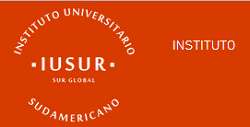Digital Divide in Lasallian University Teachers in Latin America during Pandemic by COVID-19
DOI:
https://doi.org/10.25087/resur14a5Keywords:
Digital gap, Social gap, Higher Education, University Teaching with the use of technologies, Latin America Comparative Educational Research, COVID-19Abstract
Prior to the health emergency by COVID-19, educators had a differential use of technology in their teaching processes. While some integrated the digital dimension into their sessions through platforms, software and digital meetings; others simply saw it as distant. With the outbreak of the COVID-19 crisis, the teaching staff had a hasty learning under the requirement to complete the school year. For their part, Higher Education Institutions intensified training courses, if this would lead to their efficient use. In addition to the stress that this educational process brought with it for teachers, the emotional and family spaces were disrupted, among other issues, by the work schedules and spaces. Moreover, the cost of the intensive use of technology was transferred to teachers (internet, electricity, equipment, or digital resources), which deepened the precariousness of their work. This study is part of an international comparative education research, with a mixed approach, which aims to analyze the technological strategies of teachers from since COVID-19 started, which can support to reduce the digital gap in the educational field. In this article we present part of the findings of the first stage, which includes the construction and validation of the methodological instrument. Specifically, the results of the pilot test of the questionnaire are discussed. 24 responses were obtained from Lasallian High School Teachers from Brazil (5), Colombia (3), Peru (1) and Mexico (15). Among the findings, regarding validation, semantic differences were found in linguistic terms depending on the geographical regions of the Lasallian Universities. Regarding the appropriation and management of technology, it was found that the teachers applied strategies to shorten the digital gap and that their family environment was modified by the sudden change to virtuality.
Downloads
References
Flores-Coronado, M. L. (2022). Calidad educativa. Relación con la brecha digital docente del área de Ciencias Sociales y Humanas. Revista Universidad y Sociedad, 14(S2), 112-122. https://rus.ucf.edu.cu/index.php/rus/article/view/2768
Gaytán-Alcalá, F. (2020). Conjurar el miedo: El concepto Hogar – Mundo derivado de la pandemia COVID- 19. Revista Latinoamericana De Investigación Social, 3(1), 22-26. http://revistasinvestigacion.lasalle.mx/index.php/relais/article/view/2635
Malecki, E. (2016). Real people, virtual places, and the spaces in between, Socio-Economic Planning Sciences, 58, Reino Unido: Elsevier. DOI: 10.1016/j. seps.2016.10.008.
Maya-Álvarez, P. (2008). La brecha digital, brecha social. Los recursos humanos en el desarrollo y la capacitación a través del aprendizaje digital, Gaceta de Antropología, 24 (2), artículo 45. DOI: 10.30827/Digibug.6963
Nosiglia, M.C. y Andreoli, S. (2022). Brecha digital: articulaciones institucionales, estrategias de formación inmersivas y contextos de innovación, Documentos de trabajo no. 64 (2ª época) Madrid, Fundación Carolina. https://www.fundacioncarolina.es/wp-content/uploads/2022/04/DT_FC_64.pdf
Molina, M. (2020, 17 de mayo). Educación: la brecha digital profundiza las desigualdades en la pandemia, Página 12. https://www.pagina12.com.ar/266370-educacion-la-brecha-digital-profundiza-las-desigualdades-en-
Pedró, F. (2021). COVID-19 y educación superior: De los efectos inmediatos al día después. Paris, IELSAC- UNESCO.
Pearse, K. y Rice, R. (2013). Digital Divides from Access to Activities: Comparing Mobile and Personal Computer Internet Users, Journal of Communication, vol. 63, Reino Unido: Wiley Online Library. DOI: 10.1111/jcom.12045.
Salinas, J. (2004). Innovación docente y uso de las TIC en la enseñanza universitaria. RUSC. Universities and Knowledge Society Journal, 1(1),1-16. https://www.redalyc.org/articulo.oa?id=78011256006
Sanz, I., Sáinz, J., & Capilla, A. (2020). Efectos de la crisis del coronavirus en la educación. Madrid: Organización de Estados Iberoamericanos para la Educación, la Ciencia y la Cultura (OEI).
Vallejos-Parás, C. y Rizo, S. (2020, 24 de noviembre). TICS y asignaturas teórico-prácticas Experiencias docentes en Educación Superior ante la pandemia por COVID-19. [Ponencia]. IV Encuentro de Educación Internacional y Comparada, CDMX, México.
Published
How to Cite
Issue
Section
License
Copyright (c) 2023 María Anabell Covarrubias-Díaz-Couder, Felipe Gaytán-Alcalá, Cecilia Vallejos-Parás, Celina Gastelum-Acosta, Judite Sanson de Bem, Margarita Rosa Rendón-Fernández

This work is licensed under a Creative Commons Attribution-ShareAlike 4.0 International License.










